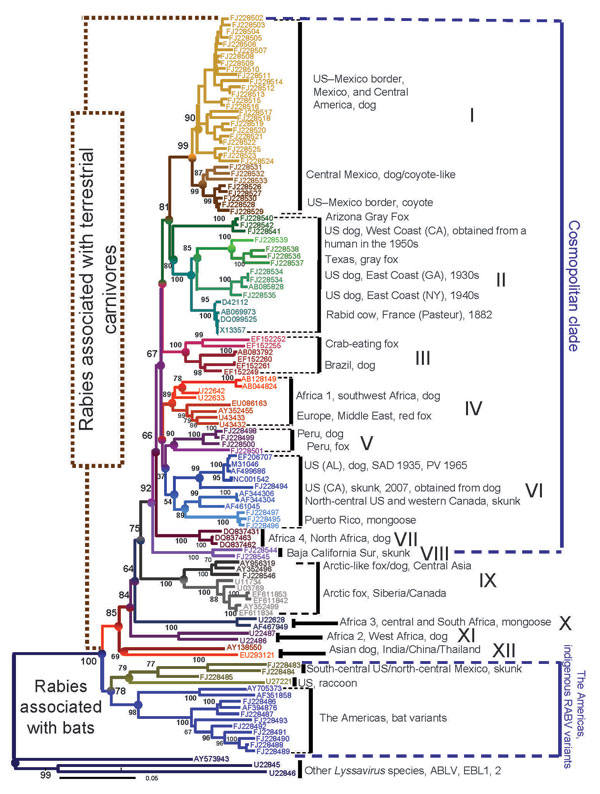Volume 14, Number 12—December 2008
Research
Enzootic Rabies Elimination from Dogs and Reemergence in Wild Terrestrial Carnivores, United States
Figure 1

Figure 1. Neighbor-joining phyogenetic tree reconstructed by using entire nucleoprotein sequences that show the consensus topology observed with maximum-likehood and Bayes methods (www.mrbayes.net). The hierarchy encompassing phylogroups, clades, groups, lineages, and taxa of rabies viruses throughout the world is shown. SAD, Street-Alabama-Dufferin; RV, rabies virus; ABLV, Australian bat lyssavirus; EBL, European bat lyssavirus. Scale bar indicates number of nucleotide substitutions per site.
Page created: July 22, 2010
Page updated: July 22, 2010
Page reviewed: July 22, 2010
The conclusions, findings, and opinions expressed by authors contributing to this journal do not necessarily reflect the official position of the U.S. Department of Health and Human Services, the Public Health Service, the Centers for Disease Control and Prevention, or the authors' affiliated institutions. Use of trade names is for identification only and does not imply endorsement by any of the groups named above.